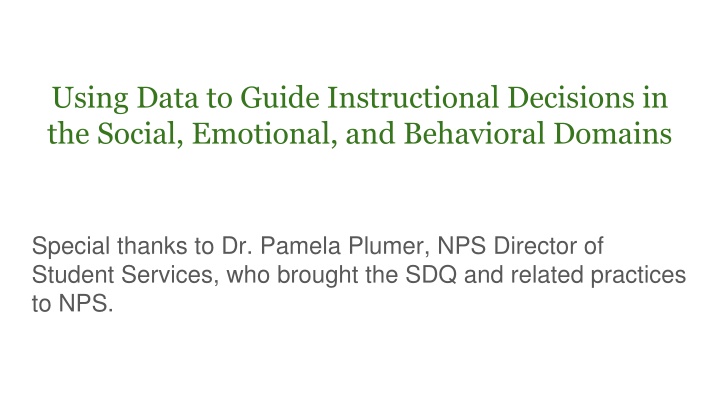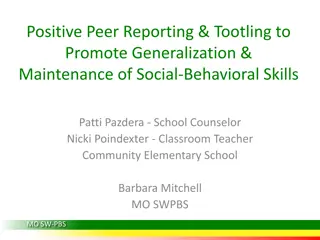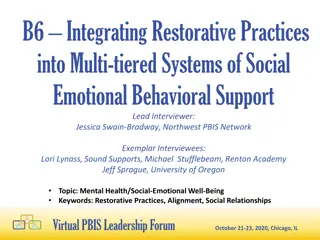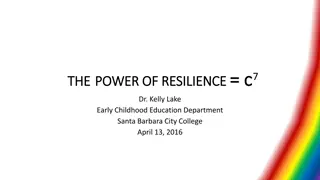Using Data for Instructional Decisions in Social, Emotional, and Behavioral Domains
Advocate the use of data-driven strategies like the Strengths and Difficulties Questionnaire (SDQ) to inform instructional decisions in social, emotional, and behavioral domains. The process involves analyzing student data, conducting meetings to review results, and creating intervention strategies tailored to individual or class needs. Utilize a menu of interventions at different tiers to address specific issues effectively.
Download Presentation

Please find below an Image/Link to download the presentation.
The content on the website is provided AS IS for your information and personal use only. It may not be sold, licensed, or shared on other websites without obtaining consent from the author.If you encounter any issues during the download, it is possible that the publisher has removed the file from their server.
You are allowed to download the files provided on this website for personal or commercial use, subject to the condition that they are used lawfully. All files are the property of their respective owners.
The content on the website is provided AS IS for your information and personal use only. It may not be sold, licensed, or shared on other websites without obtaining consent from the author.
E N D
Presentation Transcript
Using Data to Guide Instructional Decisions in the Social, Emotional, and Behavioral Domains Special thanks to Dr. Pamela Plumer, NPS Director of Student Services, who brought the SDQ and related practices to NPS.
Strengths and Difficulties Questionnaire www.sdqinfo.com Well-researched/developed tool No cost for the tool Provides results in categories that can be linked to varied interventions (Hyperactivity, Conduct, Prosocial, Peer Problems, Emotional) Can be used for follow-up after interventions
Demonstrating the high needs future Data organized by student and by class* Spring 2016 Results: Elementary Schools: Approximately 26.9% with elevated scores (outside of the average range) * Data on this table are phony - created for this presentation (names are not real students) Fall 2016 Results: Preschool: 41.7% with elevated scores Middle School Self-Reports 12.8%-17.1% with elevated scores
Teacher or Grade Level Meetings Members of the initial school team that reviewed the SDQ data present to either individual teachers or at grade-level meetings Provide and review classroom data for the students for each category Emphasize importance of the problem solving process, data used as conversation starter Review students with elevated scores in each category Discuss overall results - Is there a need for a classwide intervention/approach? Discuss individual students - Do supports currently exist? Are the right supports in place?
Creating a Menu of Interventions/Strategies Examples of current tools utilized: Tier 3: Individual support/counseling provided through IEP Specific behavior plan Tier 2: Short term social skills group Targeted short-term work in a classroom group for self-regulation Use of sensory tools/spaces Tier 1: (Highlighted interventions added after we received SDQ results) Second Step, Responsive Classroom TABATAS, GoNoodle, Acting with Purpose, Zones of Regulation
Strategies Prompted by Our Data Focus on Tier 1 Classroom and Schoolwide Supports Focus on Primary Grades























